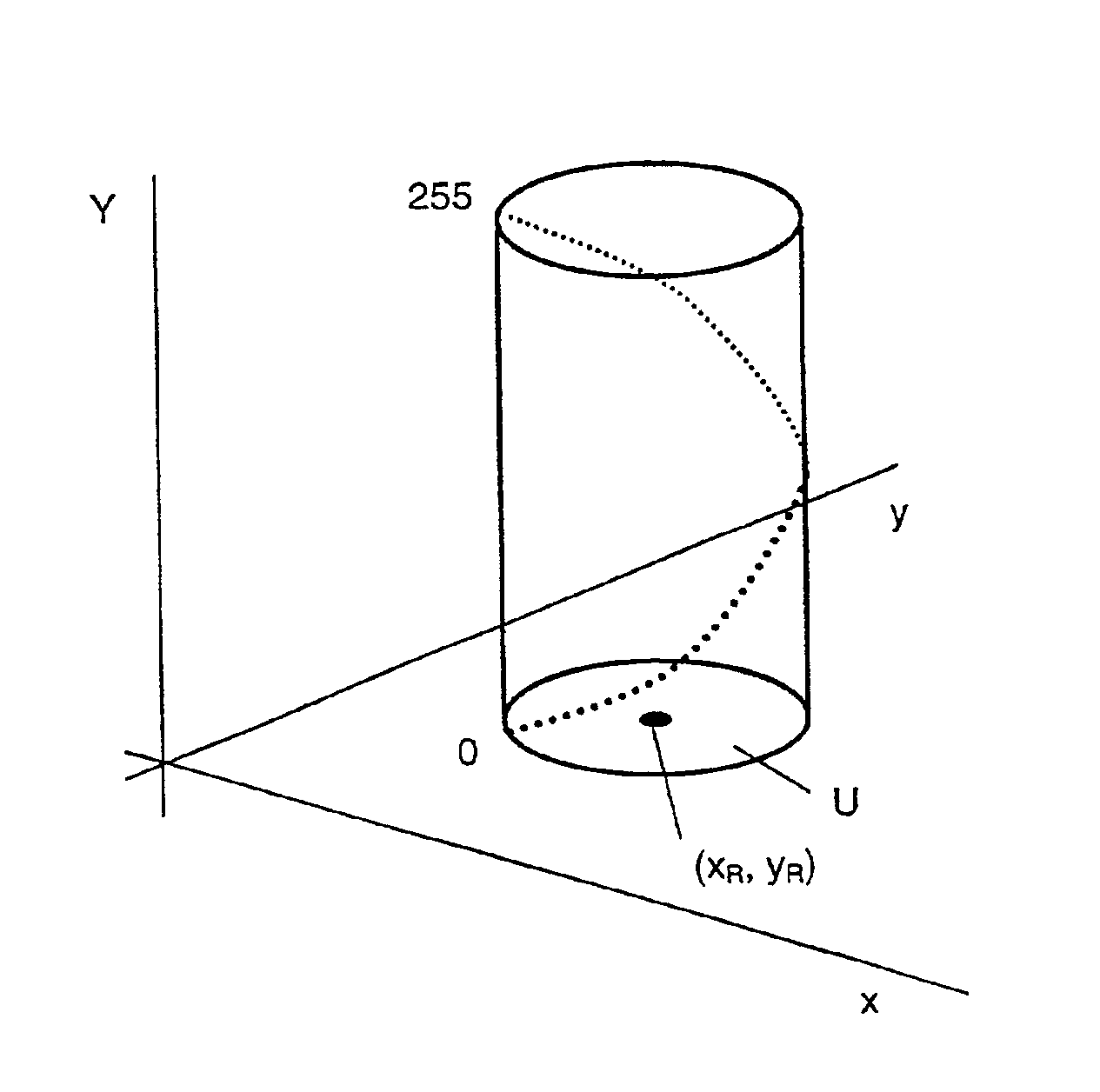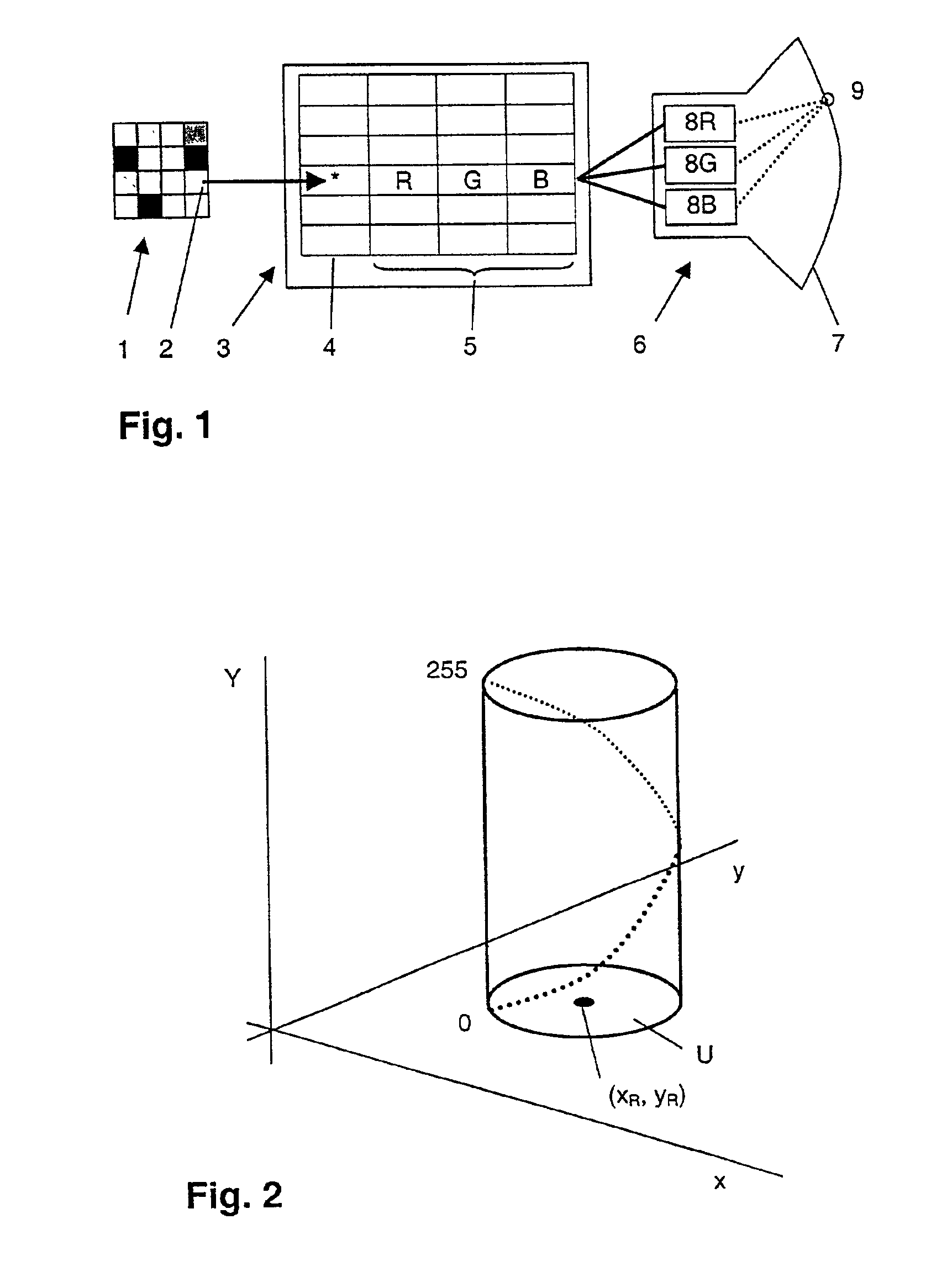Method of reproducing a gray scale image in colors
a gray scale image and color technology, applied in image enhancement, instruments, static indicating devices, etc., can solve the problems of false color reproduction methods, inadequate for the reproduction of medical gray scale images, etc., and achieve the effect of fast transformation and simple implementation
- Summary
- Abstract
- Description
- Claims
- Application Information
AI Technical Summary
Benefits of technology
Problems solved by technology
Method used
Image
Examples
Embodiment Construction
[0023]FIG. 1 shows diagrammatically the elements that are necessary for the display of a gray scale image 1 on a color monitor 6. The color monitor 6 in the present embodiment is a cathode ray tube, but any suitable display system could in principle be used for this purpose, for example a liquid crystal display (LCD), a PDP (Plasma Display Panel) or the like. The pixels 2 of the gray scale image 1 are grouped in discrete, digitally encoded shades of gray; typically 256 different shades of gray can be distinguished.
[0024]In the transformation unit 3, performing the conversion of the shades of gray of the image 1 into control signals (Digital Driving Levels or DDL) for the color monitor 6, the 256 different shades of gray possible are tabulated in the column 4 of a look-up table which comprises 256 lines. The look-up table also comprises three columns 5 in which the respective control signals R, G and B that serve for the three electron guns 8R, 8G and 8B of the color monitor 6 and ar...
PUM
 Login to View More
Login to View More Abstract
Description
Claims
Application Information
 Login to View More
Login to View More - R&D
- Intellectual Property
- Life Sciences
- Materials
- Tech Scout
- Unparalleled Data Quality
- Higher Quality Content
- 60% Fewer Hallucinations
Browse by: Latest US Patents, China's latest patents, Technical Efficacy Thesaurus, Application Domain, Technology Topic, Popular Technical Reports.
© 2025 PatSnap. All rights reserved.Legal|Privacy policy|Modern Slavery Act Transparency Statement|Sitemap|About US| Contact US: help@patsnap.com



